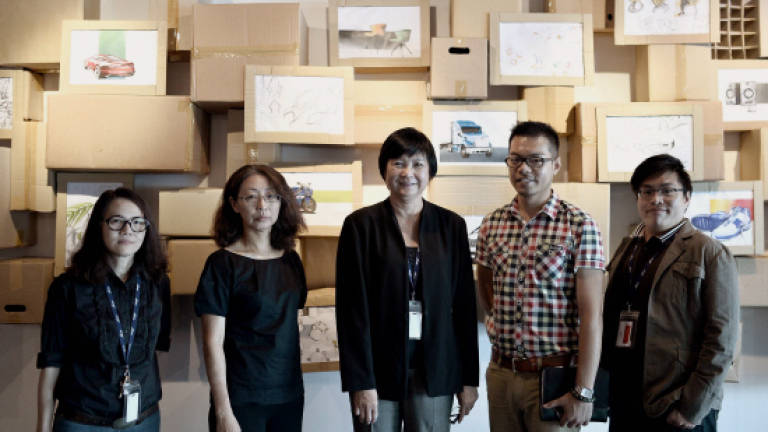Developing students for the creative industry

The Malaysian Institute of Art (MIA) aims to train creative, innovative, confident and self-reliant professional artists and designers who will contribute towards the advancement of the creative industry.
“We want to train a generation of people who can work on their own forte. It is very difficult when you are trying to hone and bring out creativity as sometimes students are very laid-back. You have to put in a lot of effort to get that spark and then you will see the product,” said MIA president and CEO Tian Peak Lim.
“We like to encourage creative diversity and different kinds of style so that graduates can provide the industry with different kinds of techniques,” said MIA head of Illustration Lim Li Li.
“Our content and teaching approach makes us different,” said MIA head of Interior Design, Ooi Ai Eng. “We offer project-based study where we give students problem-based learning that cultivates their thinking and problem-solving skills.”
“For example, in Industrial Design, we always encourage students to identify their own project; hence they have to be very observant and sensitive to their surroundings to come up with it,” said MIA head of Industrial Design, Liew Yong Kian.
“We have a good system here with our Foundation Studies where students go into general art and design fundamentals so they can understand themselves better before choosing their major,” he added.
“The Foundation is actually the first semester,” Tian said. “During that semester, students have to do a lot of drawing and basic skills. We believe strong foundation and manual skills are very important.”
“Another unique part of MIA is that we have multi-disciplinary art design programmes under one roof so the students have the opportunity to interact with different faculties. This would give them extra ideas to extend to their own area of work,” Ooi said.
Liew said it is important for students to be open-minded because when they go out into the real world, they have to face comments everyday, whether from the boss or from clients. He thinks students should be able to analyse whatever comments come their way and improve accordingly.
“We have critic sessions where students have to put up their project for comments from lecturers and peers. This allows them to learn how to structure their thinking, idea and presentation,” Lim said.
“But you have to be really careful with students today. Every critic has to be constructive so that they will be able to move on with confidence,” Ooi added.
Networking is very important, Liew said. Not just within the institution but with other institutions, agencies and professional bodies to keep them ahead in terms of design information. MIA also has links with foreign universities that would send their lecturers for workshops and talks.
“We must have a lot of connection with industry players, so we always go for seminars and exhibitions where we can meet them, and sometimes we invite them as speakers. We also have external assessors and curriculum advisers from the industry,” Ooi added.
“There are certain graduates who are very marketable across the board,” Tian said. “Our strength is the students’ skills. When they go for their internship, they are ready to take on the job instead of following and learning.
“When they graduate, they are more or less identified by the company (that would hire them). Many choose to freelance because they want the flexibility and they know they can make a living because their skills are good. We are proud to say that our students are equipped with strong skills,” she added.
On the creative industry, MIA acting coordinator of Graphic Design, Jackson Lim Teck Huat, said graphic design has evolved: in the past it was mainly printed work—today, it is more of digital work.
“Graphic designers today are not just doing advertising, they can also do multimedia as well as animation. The job scope is broad and today, students don’t just graduate as a designer; they can also be a digital artist or multimedia designer,” he said.
According to Ooi, interior designers are in high demand because with growing affluence, people appreciate quality lifestyle, and there is a trend among Malaysians to design their home.
She also says Malaysia emphasises a lot on green technology and sustainable design, so designers have to keep up with developments and meet design trends.
“I strongly believe in having a good portfolio. Combine that with passion and attitude—and it will take you places,” Ooi added.